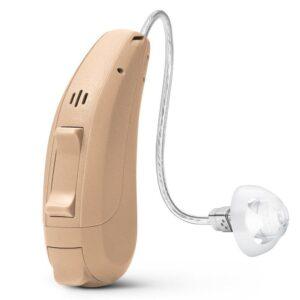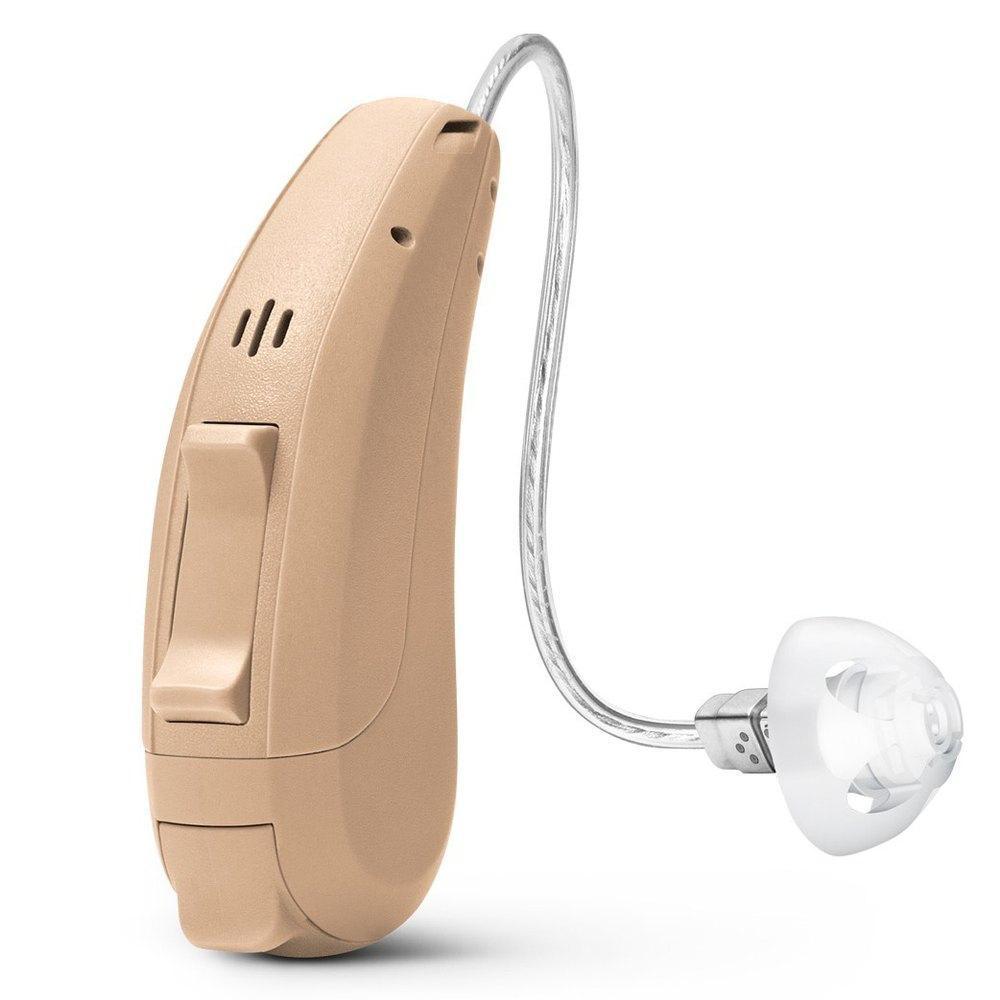Hearing aids have evolved dramatically over the past few decades, becoming increasingly sophisticated, discreet, and effective. Among the various styles available today, Receiver-In-Canal (RIC) hearing aids have emerged as one of the most popular choices for individuals with hearing loss. This article explores what RIC hearing aids are, how they work, their advantages and limitations, and who might benefit most from this technology.
Understanding RIC Hearing Aid Design
A Receiver-In-Canal hearing aid consists of two main components connected by a thin wire:
- The main body: This sits behind the ear (BTE) and houses the microphone, digital processor, battery, and controls. This component captures sound, processes it, and sends the amplified signal to the receiver.
- The receiver: Unlike traditional Behind-The-Ear (BTE) hearing aids where the receiver (speaker) is in the main casing, the RIC design places the receiver directly in the ear canal. This component is connected to the main body by a thin, almost invisible wire.
The receiver is typically attached to a soft dome or custom earmold that sits comfortably in the ear canal. This design creates a more open fit compared to traditional hearing aids, allowing natural sound to enter the ear alongside amplified sound.

How RIC Hearing Aids Work
The operational process of RIC hearing aids follows these steps:
- Sound collection: The microphones in the behind-the-ear portion capture environmental sounds.
- Sound processing: The digital processor analyzes the sound, enhances speech, reduces noise, and adjusts the sound according to the user’s hearing profile and preferences.
- Signal transmission: The processed digital signal travels through the thin wire to the receiver in the ear canal.
- Sound delivery: The receiver converts the electrical signal back into acoustic energy (sound), delivering it directly in the ear canal for improved clarity and reduced feedback.
- Sound mixing: For open-fit configurations, the amplified sound mixes with natural sound entering through the venting in the ear canal, creating a more natural listening experience.
Advantages of RIC Hearing Aids
RIC hearing aids have gained popularity for several compelling reasons:
Cosmetic Appeal and Comfort
- Discreet appearance: The main component sits inconspicuously behind the ear, while the thin wire connecting to the in-canal receiver is barely visible.
- Lightweight design: The split configuration distributes weight between the ear canal and behind the ear, making them comfortable for all-day wear.
- Less occlusion: The open-fit design reduces the “plugged” feeling many users complain about with other hearing aid styles.
Audio Performance
- Superior sound quality: By placing the receiver directly in the ear canal, sound distortion is minimized, and clarity is enhanced.
- Reduced feedback: The physical separation of microphone and receiver decreases the whistling sound (feedback) common in other hearing aid designs.
- Natural sound experience: The open fit allows low-frequency sounds to enter the ear naturally while higher frequencies are amplified, creating a more balanced hearing experience.
Versatility and Adaptability
- Wide fitting range: RIC devices can address mild to severe hearing loss through different receiver power levels and dome/earmold options.
- Easy maintenance: The receiver can be replaced independently if it becomes damaged or clogged without requiring a complete hearing aid replacement.
- Technology upgrades: As technology advances, users can often upgrade to newer receivers without replacing the entire device.
Limitations of RIC Hearing Aids
Despite their popularity, RIC hearing aids aren’t ideal for everyone:
- Moisture sensitivity: The in-canal receiver is more exposed to earwax and moisture, which can affect durability.
- Size limitations: While discreet, they aren’t as invisible as completely-in-canal (CIC) options.
- Dexterity requirements: The small components and receiver wires require some manual dexterity for handling and maintenance.
- Not suitable for profound loss: Those with profound hearing loss typically require more powerful options.
Technology Features in Modern RIC Hearing Aids

Today’s RIC hearing aids incorporate cutting-edge technology:
- Bluetooth connectivity: Direct streaming from smartphones, TVs, and other devices.
- Rechargeable batteries: Eliminating the need for frequent battery changes.
- Artificial intelligence: Learning user preferences and automatically adjusting to different environments.
- Smartphone apps: Allowing discreet adjustments to volume, programs, and equalization.
- Telecoil technology: For improved hearing in venues with loop systems.
- Wind noise reduction: Specialized algorithms to minimize interference from wind.
- Multiple microphone arrays: Creating directional focus for better speech understanding in noisy environments.
Who Should Consider RIC Hearing Aids?

RIC hearing aids are particularly well-suited for:
- First-time hearing aid users: The natural sound quality and comfortable fit ease the transition to amplification.
- Active individuals: Their robust design withstands an active lifestyle while providing excellent clarity.
- People with mild to severe hearing loss: The range of receiver power options accommodates various degrees of hearing loss.
- Technology enthusiasts: Those who value connectivity features and digital integration.
- Those with dexterity limitations: The slightly larger BTE component is easier to handle than completely-in-canal options.
They may be less suitable for individuals with:
- Profound hearing loss: Who typically require more powerful options.
- Very active moisture exposure: Swimmers or those in very humid environments might need more protected designs.
- Significant manual dexterity challenges: The thin receiver wires require some finesse to handle.
Cost Considerations
RIC hearing aids typically range from Rs 20000/- to Rs 300000/- per device, depending on technology level. While not the least expensive option, their versatility, performance, and upgradability often make them a cost-effective choice long-term. Many manufacturers offer different technology tiers within their RIC product lines, allowing consumers to balance features with budget constraints.
Conclusion
Receiver-In-Canal hearing aids represent an excellent balance of performance, aesthetics, comfort, and versatility for many individuals with hearing loss. Their innovative design addresses many traditional hearing aid complaints while incorporating cutting-edge technology to enhance the listening experience.
When considering hearing aids, a comprehensive hearing evaluation and consultation with an audiologist is essential. The professional can demonstrate various options, including RIC devices, to determine the best match for an individual’s hearing needs, lifestyle, anatomy, and preferences.
As hearing technology continues to advance, RIC hearing aids remain at the forefront, consistently evolving to provide better sound quality, connectivity, and user experience—helping millions of people worldwide reconnect with the sounds that matter most in their lives.

